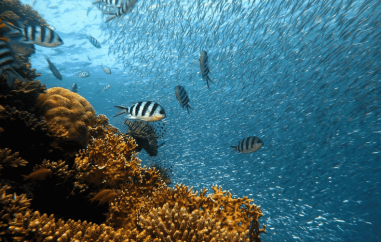World's oldest panda comes from Spain
The panda might not strike you as the most Spanish of animals, but is seems that 11 million years ago it roamed on Spanish land. Now, new research is suggesting that the panda's subfamily, Ailuropodinae, originated in Spain and only spread to China some time later. These conclusions are based on a new fossil panda, thought to be a close cousin of the modern giant panda, and the oldest panda fossil found so far.
The fossil, called Kretzoiarctos ("Kretzoi bear", after Hungarian palaeontologist Miklós Kretzoi), was found by Dr. Juan Abella, buried in the museum collections at the National Museum of Natural Sciences in Madrid and at the Catalan Institute of Paleontology. The specimen was dug up in Aragon and Catalonia, in Spain, several years earlier. Dr. Abella and colleagues described their findings in the open access journal PLoS ONE.
Although all that was found was a lower jaw and several upper teeth, Dr. Abella and colleagues used their palaeontological expertise and advanced bioinformatics approaches to reconstruct its phylogenetic tree and find out who were the closest relatives of Kretzoiarctos. Their results show that it was indeed closely related to the black and white giant panda of today, with only a few other extinct cousins being also closely related.
The work of Dr. Abella and colleagues also supports the widely held consensus that the giant panda is a bear. The small, long-tailed red "panda" on the other hand is more closely related to raccoons and weasels than to giant pandas or bears. However, both eat bamboo, and thus have a "false thumb" to help them grip and very similar teeth. This is a great example of convergent evolution, where similar adaptations occur in different species of animals because the animals share a common way of life where such adaptation is useful. Another example of convergent evolution is how both whales and fish have fins, but whales are mammals and more closely related to humans than fish. This is something which often confuses scientists trying to work out how animals are related to each other. But how do we know Kretzoiarctos was not also an example of convergent evolution? Dr. Abella explains that they built an extensive dataset of morphological characters for many species, and this allows them to be quite certain of who are the closest relative of this new panda species. "We know that Kretzoiarctos is a... [member of the giant panda subfamily, Ailuropodinae] because it shares quite a lot of characters ...with the giant panda and its ancestors."
Kretzoiarctos is especially interesting because it is, so far, the oldest member of the giant panda lineage found. This means we know that pandas definitely existed 11 million years ago, and probably earlier because, as Dr. Stéphane Peigné of the National Museum of Natural History) in Paris adds "although Kretzoiarctos is the oldest ...[member of the giant panda subfamily], it is not the most morphologically primitive one, indicating that ...the subfamily is ...[older] than the middle Miocene". The fossil's age and location also indicates that giant pandas may have originated in Western Europe, even if not necessarily in Spain itself, and then spread east to China and the rest of Asia. Dr. Peigné adds that this is yet more interesting "because, the red panda lineage ...probably also originated from Western Europe" showing a similar pattern of eastward migration, despite not being closely related. Dr. Abella is keen to stress that he is making no grand claims however: "We do not say pandas come from Spain, just that we have found the oldest member of the subfamily in the Iberian Peninsula".
So did Kretzoiarctos sit and munch bamboo, like the modern panda, and was there thus bamboo in ancient Spain? Dr. Abella doubts this was the case: "We think Kretzoiarctos was still quite omnivorous, but its dentition shows several characters that could give the animal the capability of eating quite tough plant material. Not bamboo though."
Abella J, Alba DM, Robles JM, Valenciano A, Rotgers C, et al. (2012) Kretzoiarctos gen. nov., the Oldest Member of the Giant Panda Clade. PLoS ONE 7(11): e48985. doi:10.1371/journal.pone.0048985
Available free online at: http://www.plosone.org/article/info:doi%2F10.1371%2Fjournal.pone.0048985
For an artistic conception of what this panda may have looked like, go to:
http://novataxa.blogspot.de/2012/11/2012-kretzoiarctos-beatrix.html















































